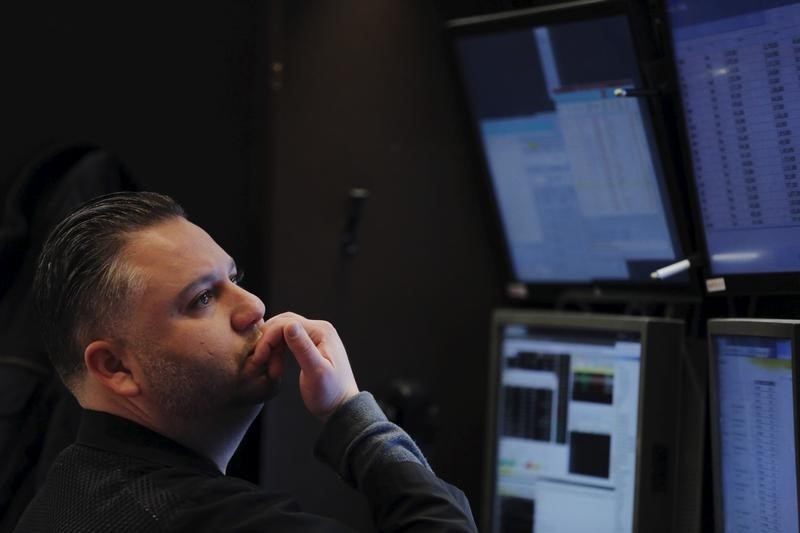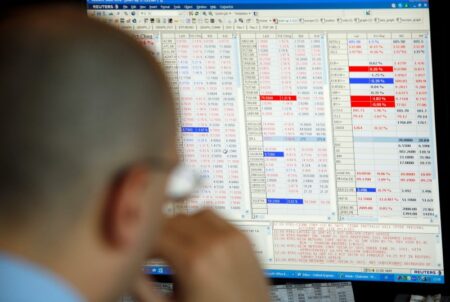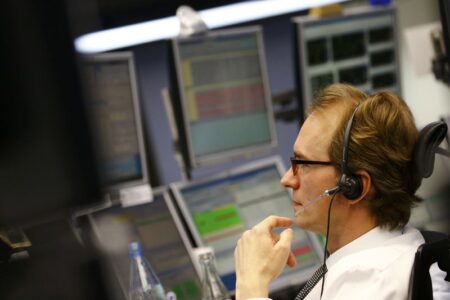By Arasu Kannagi Basil and Noel Randewich
(Reuters) -A glitch at the New York Stock Exchange (NYSE) triggered massive swings in the shares of Berkshire Hathaway (NYSE:) and Barrick Gold (NYSE:), and trading halts in dozens of other companies on Monday, before the bourse fixed the problem.
The NYSE, owned by Intercontinental Exchange (NYSE:), by late morning said a technical issue had been resolved and that the impacted stocks had resumed trading.
It was the second stock market hiccup in less than a week after a glitch last Thursday affected the dissemination of real-time data for the and Dow Jones indexes for over an hour.
The Consolidated Tape Association (CTA), responsible for disseminating real-time trade data on stock exchanges, said Monday’s problem related to a new software release at one of its data centers.
The CTA said it resolved the issue by switching to a secondary data center running the previous version of the software.
It provided a list of 40 securities that were subject to trading pauses on CTA between 9:30 a.m. and 10:27 a.m. ET and that were potentially impacted by the technical issue.
Some of the stocks halted on the NYSE showed unusual outsized movements.
Berkshire Hathaway’s class A shares and Barrick Gold were shown to be down 99.97% and 98.54%, respectively, due to the technical issue, before those trades were corrected.
After trading resumed, Berkshire Hathaway was down about 0.3% and Barrick Gold was up 0.6%, and investors said overall sentiment was unaffected.
Berkshire and Barrick Gold did not respond to requests for comment about Monday’s technical problem.
The S&P 500 was last down 0.4%.
“I don’t think the overall market is reacting,” said Art Hogan, chief market strategist at B. Riley Financial.
The NYSE and the CTA said the problem was related to limit up-limit down bands meant to prevent extraordinary market volatility and extreme price movements in individual stocks by preventing trades outside of specific price ranges that are updated throughout the trading day.
The price band for each security is set at a percentage level above and below its average price in the preceding five minutes.
The bands were developed as part of the response by financial regulators and exchanges to the “flash crash” of 2010, which briefly wiped out nearly $1 trillion in market capitalization in a few minutes.
On May 6, 2010 when equities were recovering from the financial crisis and in the early stages of what would become a near 11-year bull market, the tumbled almost 700 points in minutes.
Exchange outages, caused by software and hardware glitches, cyberattacks, and even hungry squirrels, have roiled markets and shaken investor confidence for decades, as trading has moved from the floors and pits of bourses to electronic systems that match trades at nearly the speed of light.
In February 2023, the NYSE said it would reimburse investors for losses due to a glitch that caused widespread confusion and resulted in thousands of trades being nullified.
The NYSE did not immediately respond to a request for comment about whether it would reimburse investors potentially affected by Monday’s issue.
Read the full article here
















